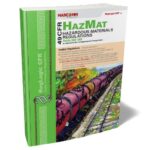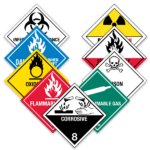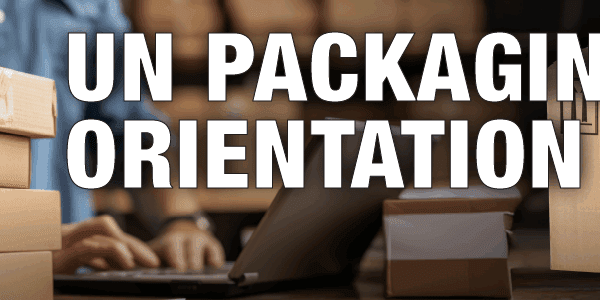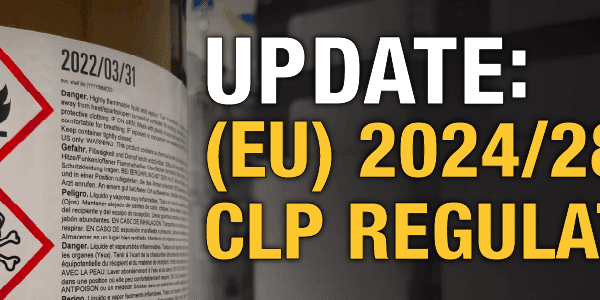
PHMSA Publishes Notice of Proposed Rulemaking for International Harmonization, HM-215Q
Since the Covid pandemic has started to recede, the Pipeline and Hazardous Materials Safety Administration (PHMSA) has been working hard to get its “Hazardous Materials Regulations” (HMR) up to date. One major issue is trying to synchronize the HMR with the international standard found in the UN Recommendations on the Transport of Dangerous Goods to ensure that American imports and exports can move as easily as possible. Recently, they’ve taken the next step by publishing a “Notice of Proposed Rulemaking” (NPRM), part of their HM-215 series of harmonization amendments, that will update to the 22nd edition of the UN Recommendations that was published for 2023-2024.
The Notice of Proposed Rulemaking to the HMR, which are part of Title 49 of the Code of Federal Regulations, was published on May 30, 2023, and closes for comments on July 31. The reference assigned is 2137-AF57. Remember, NPRMs are proposals, not finalized amendments, so there is always the chance that the Final Rule may be different, depending on the comments received and what alternatives are available. As always, it will be a balancing act between the benefits of changing to new rules and the costs of making those changes.
What Are the Main Changes?
There are a number of significant and more minor changes in the NPRM. The main ones include:
- Updating references in the HMR to the 2023-24 edition of the ICAO Technical Instructions on the Safe Transport of Dangerous Goods by Air, revision 41-22 of the International Maritime Dangerous Goods Code (IMDG) and the 22nd revision of the UN Recommendations.
- There will also be updates to certain references for ISO9809 regarding gas containers.
- Complex updates have been made to certain parts of the UN Manual of Tests and Criteria for classification of dangerous goods to more closely match the classification rules for the Globally Harmonized System of Classification and Labelling (GHS 9, 2021). These would be incorporated into the classification system of the HMR.
- A number of changes have been made to entries in the Hazardous Materials Table (section 172.101). These would include adding or removing proper shipping names, hazard classification adjustments, corrections of packing groups, and addition or removal of special provisions, packaging authorizations, and aircraft maximum net quantities.
- There were four entries for polymerizing substances added “temporarily” back in 2017. This amendment would make these entries permanent.
- The shipping name “Cobalt dihydroxide powder,” UN3550 will be added to the Hazardous Materials Table.
- The provisions for “small” (low-powered) lithium batteries by air would be revised to be consistent with the ICAO Technical Instructions for the Safe Transport of Dangerous Goods by Air (for example, banning lithium-ion standalone batteries from passenger aircraft.)
What Changes Are Not Being Made in this NPRM?
There are some changes found in the 22nd edition of the UN Recommendations that PHMSA has decided not to implement into the HMR, at least not now. These include:
- PHMSA will not yet accept a new style of packaging in the UN Recommendations, fibre-reinforced plastic portable tanks (FRPs). PHMSA is not yet convinced they’re safe enough for hazardous materials and want further data and research. However, to facilitate international trade, they will be permitted on ships entering US ports if they are not offloaded.
- The UN Recommendations and the International Maritime Dangerous Goods Code have changed some of the terminology with regards to pressure vessels such as cylinders. PHMSA is not yet ready to incorporate these changes – it would require a significant and wide-ranging rewrite to US regulations, and they believe that would be better served by a separate rulemaking if they decide it is necessary to do so.
- The UN Recommendations introduced maximum internal pressure limits for aerosols. The HMR is already significantly disharmonized with respect to aerosols compared to the UN, and PHMSA believes that there will need to be a full review of how to do this in the HMR.
Lithium Battery Changes to Section 173.185
Lithium batteries remain a fast-changing area affecting many shippers even if lithium batteries are not their prime products. PHMSA intends to increase harmonization with the ICAO Technical Instructions by making the following changes:
- PHMSA would drop the requirement for the lithium battery test summary document to be provided for button cells when installed in equipment (although it would still be required when button cells are shipped not in equipment).
- The Watt-hour rating of “large” (high-powered) lithium-ion batteries would be required on outer casings, as it is already on the casings of “small” (low-powered) batteries.
- Paragraph 173.185(b)(3) would permit lithium cells and batteries packed with equipment to be placed either in inner packagings that then go inside an outer packaging or inner packaging that goes with the equipment in a PGII-rated outer packaging. This allows the use of non-UN specification packaging for equipment if the batteries are in a smaller UN specification package.
- A new paragraph would be added to limit the number of larger cells or batteries in the package when transported by air contained in or packed with equipment to the number of batteries to power the equipment plus two sets of spares.
- For small lithium batteries
- The “telephone number for more information” would become optional on the lithium battery handling mark, to be phased out in synchronization with international standards by the end of 2026.
- Harmonization would be increased with the provisions for small batteries shipped under ICAO as Section IB or Section II by air.
- For small batteries, packages would have to be able to withstand a stacking test.
- The term “Battery assemblies” would be phased out as it’s redundant with “batteries.”
What Do You Need to Do About This?
As always, an NPRM represents proposed, not finalized, changes. If you’ve noticed changes in the international regulations, you should make sure to read the NPRM and determine how the changes would affect your operations. If there are concerns, you can let PHMSA know through their comment portal. But don’t move beyond planning until a Final Rule has been published in the Federal Register. In general, these harmonization amendments take some time to get right, and reviewing comments and making necessary changes will take a period of months (or, for contentious changes, even years).
ICC Compliance Center will, of course, monitor this new requirement as PHMSA progresses through the development process. If you have any questions, contact ICC Compliance Center, our team of experts is just a call away for our customers at 855.734.5469 or send us an email, we’re happy to help.
Stay up to date and sign up for our newsletter!
We have all the products, services, and training you need to ensure your staff is properly trained and informed.
Sources:
Federal Register, May 30, 2023, https://www.federalregister.gov/documents/2023/05/30/2023-07109/hazardous-materials-harmonization-with-international-standards
Safety Data Sheet, EC Regulation 1907/2006, Cobalt Dihydroxide, https://unece.org/DAM/trans/doc/2019/dgwp15ac1/ECE-TRANS-WP15-AC1-2019-GE-INF23Annexe_3_e.pdf









 ICC USA
ICC USA ICC Canada
ICC Canada